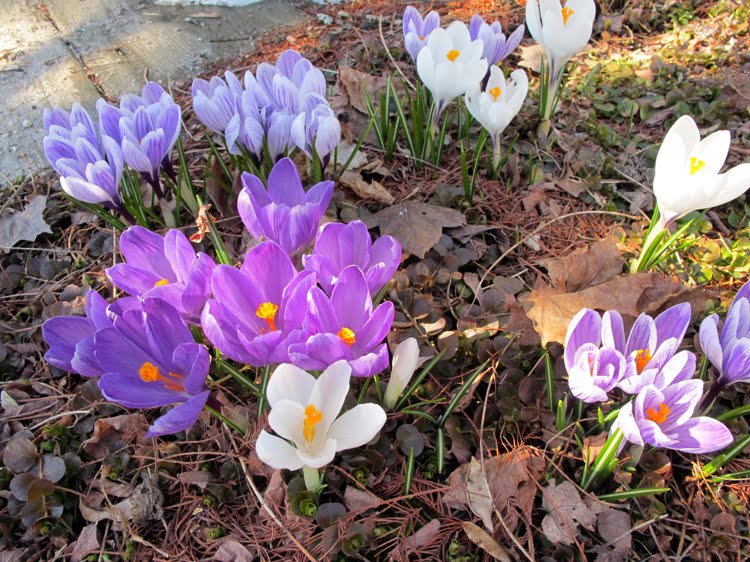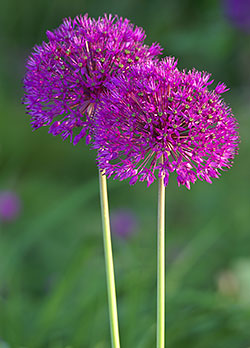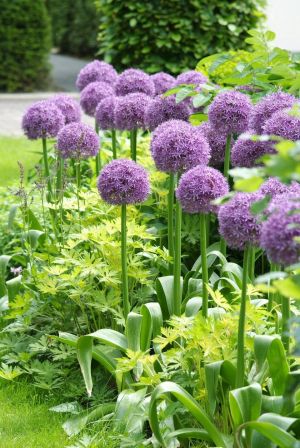… is planting spring-flowering bulbs.

There are lots of bulbs that are not dug up and eaten by critters, with flowers that are not eaten by critters once they bloom. The tried-and-true are daffodils and alliums. Both of these types of bulbs naturalize and give a welcome early and later spring show.
Tips #1:
- Plant daffodil bulbs in “bouquets”.
- Don’t plant bulbs in areas of the garden where the soil is too wet – they can rot if they sit in wet soil.
- Plant large alliums as punctuation marks in the garden, but make sure that they’re planted among other perennials that will hide the alliums’ yellowing foliage as it ages. The big lollypop alliums lose their foliage almost as soon as they flower.


Allium 'Purple Sensation'

Allium thunbergii 'Alba'

Allium 'Graceful'

Allium cereuleum

Tips #2:
- Don’t plant your bulbs too soon (or too late). Here’s where you need to know about “biological zero” – the temperature at which biological activity (including microbial growth processes) are stopped. In other words, the temperature of your refrigerator – cold enough to stop “things” from growing in your food – about 42 degrees F. It turns out that when the ground temperature gets below about 50 degrees F, roots can still grow, but shoots can’t. When the ground temperature gets below biological zero, nothing will grow, even though the ground isn’t frozen.
- The ideal for bulbs is that they grow roots after you plant them, but not shoots. That way, they’ve gotten a good solid start before the ground temperature reaches biological zero, but they haven’t started shoots that sap their energy stores and are vulnerable to damage by the first frost. So aim for planting your bulbs when the ground temperature at 6 – 10” below the surface (where the bulbs will be located) should be “just right” - usually sometime in mid-to-late November.
- Planting them “too late” (i.e. after the ground temperature is below 42 degrees F) is not optimal – but much preferable to not planting them at all! So go ahead and plant bulbs in December, as long as the ground is not frozen – you need to be able to plant them at the proper depth.
Tips #3:
- Plant bulbs in the weatherproof containers that you allow to overwinter outside. A small amount of work (since it’s a small space) can reward you with delightful flowers when spring comes – and tide the containers over until you’re ready to add your spring or summer flowers.

